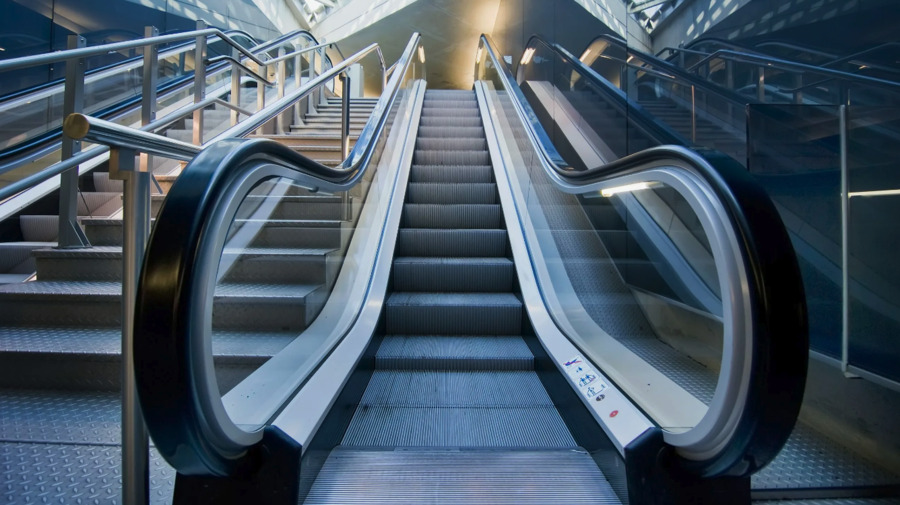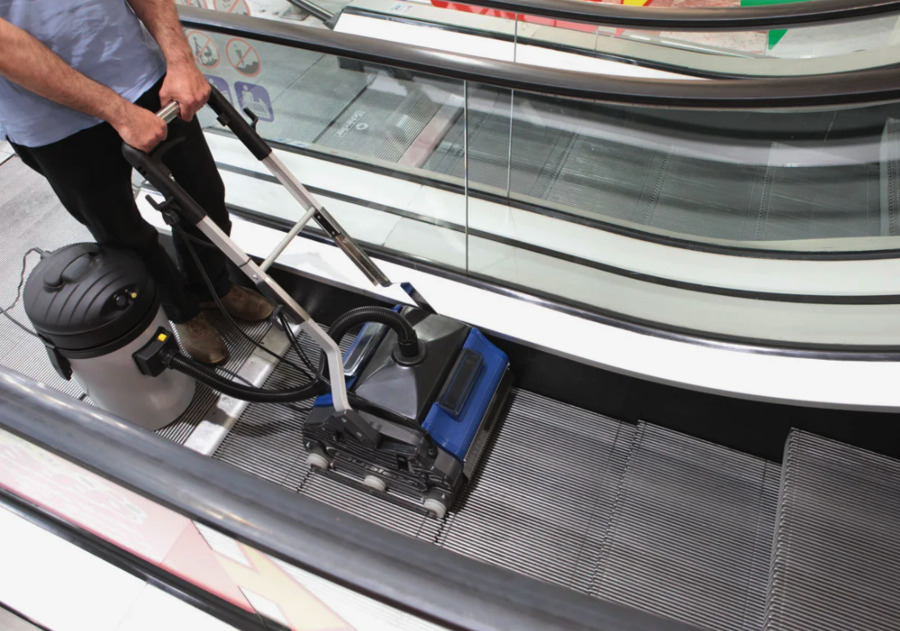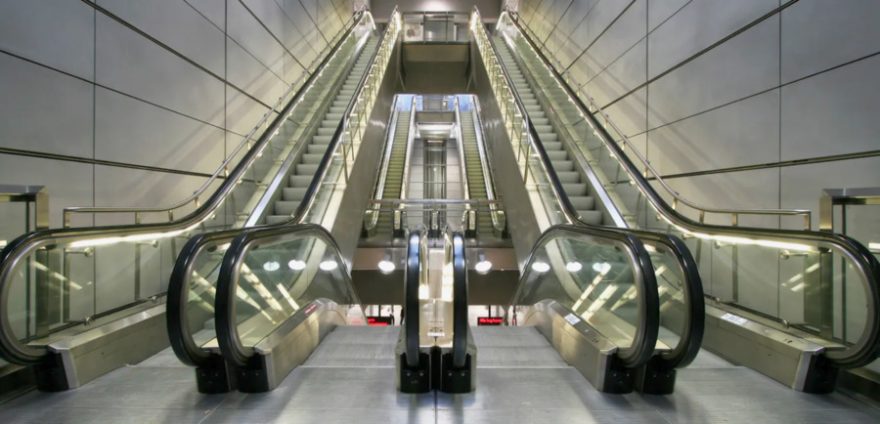Escalators are an integral component of modern infrastructure, bridging vertical distances with ease and efficiency. This detailed exploration delves into their historical evolution, design intricacies, types based on installation and mobility, and the crucial role of regular maintenance.
What is an Escalator?
An escalator is a moving staircase consisting of a motor-driven chain of individually linked steps on a track which cycles the steps in a loop. This innovative transportation system allows for the continuous movement of people between different floors without pause, ideal for handling large crowds efficiently. Escalators are typically found in environments where elevators would be too slow or impractical, offering a balance between the permanence of stairs and the convenience of an elevator.
History of the Escalator
The idea of an escalator was first conceptualized and patented in the 19th century by Nathan Ames under the name “Revolving Stairs.” Although Ames’ design never came to fruition, the concept paved the way for future developments. In 1891, Jesse Reno created the first working escalator, which he introduced at Coney Island as an amusement ride rather than a practical commuting option. This invention caught the eye of Charles Seeberger, who later teamed up with the Otis Elevator Company to refine the design and commercialize it. In 1899, the first commercial escalator was installed in the Macy’s Department Store in New York, marking the beginning of escalators as we know them today. Seeberger is also credited with coining the term “escalator,” which combines “scala,” the Latin word for steps, with the suffix “-ator,” a nod to its mechanical nature.
Where Escalators Are Used
Escalators are strategically installed in areas where efficient vertical mobility is crucial. They are a common sight in places like shopping malls, airports, metro and train stations, hotels, and sports arenas. In commercial settings, escalators facilitate easy access across multiple floors, encouraging shopping and exploration. In public transport systems, they expedite the flow of passengers, reducing bottlenecks and improving overall transit efficiency.
Escalator Design
Escalators are designed with several key components: a truss that houses the mechanism, a chain-driven system of steps, and moving handrails that ensure passenger safety. The steps themselves are designed to flatten out at the ends to allow for a smooth transition on and off the escalator. Safety features such as emergency stop buttons, directional indicators, and skirting brushes enhance the safe operation of the escalator, preventing accidents and ensuring the device stops immediately if a potentially dangerous situation arises.

Types of Escalators by Place of Installation
Escalators can be categorized based on their installation locations:
– Tunnel Escalators: These are typically longer and more durable, designed to withstand the rigors of underground environments like subway systems.
– Floor Escalators: Common in multi-story buildings such as shopping malls and office buildings, these escalators facilitate easy access between floors, enhancing the flow of foot traffic and improving accessibility.
Types of Escalators by Mobility
Escalators are also differentiated by their mobility:
– Stationary: Most escalators are permanently installed fixtures designed for long-term use in buildings and other structures.
– Mobile: These are temporary, portable escalators that can be installed and removed as needed, often utilized in exhibitions or special events to manage the flow of people.
By the Type of Movement of the Transport Web
The movement pattern of escalators can vary significantly:
– Straight: The most common type, these escalators move directly between two points and are straightforward in design and function.
– Spiral: More complex in design, spiral escalators wrap around a central axis, offering a visually appealing and space-saving solution in compact areas.
Importance of Regular Cleaning of Escalators
Regular cleaning is critical not only for maintaining the aesthetic appeal of escalators but also for ensuring their operational efficiency and safety. Dirt and debris can accumulate in the moving parts of an escalator, leading to increased wear and tear and potentially causing malfunctions or safety hazards.

Escalator Cleaning Machines
To efficiently maintain the cleanliness of escalators, specialized cleaning machines have been developed. These machines are designed to adapt to the escalator’s unique structure, reaching into crevices and between steps to remove accumulated dirt and debris effectively. They automate much of the cleaning process, reducing the need for manual labor and ensuring thorough cleaning.
Pros of Escalator Cleaning Machines
The benefits of using specialized escalator cleaning machines include:
– Versatility: These machines are capable of cleaning both escalators and similar systems such as moving walkways, making them highly versatile.
– Efficiency: They provide a deep clean by applying a specialized cleaning solution that targets and removes dirt from hard-to-reach places.
– Ease of Use: Designed for simplicity, these machines are user-friendly and require minimal training to operate effectively.
– Portability: Their compact design makes them easy to transport and store, ideal for properties with multiple escalators.
– Self-contained Operation: These machines operate independently, allowing cleaning staff to focus on other tasks, which enhances productivity and efficiency in maintenance routines.
Conclusion
Escalators play a vital role in modern urban infrastructure, providing vertical mobility and managing the flow of people in crowded public spaces. Their historical development, specialized design and constant need for regular maintenance underscore their importance. With the advent of specialized cleaning technologies, the maintenance of these critical systems has become more convenient, ensuring their safety, cleanliness and functionality for the public.Today, cleaning equipment suppliers dubai offer a wide range of automatic escalator cleaning equipment to extend their lifespan and make them as comfortable and safe as possible.

Hockey fan, hustler, record lover, Mad Men fan and Guest speaker. Making at the nexus of beauty and elegance to craft experiences both online and in real life. Concept is the foundation of everything else.
